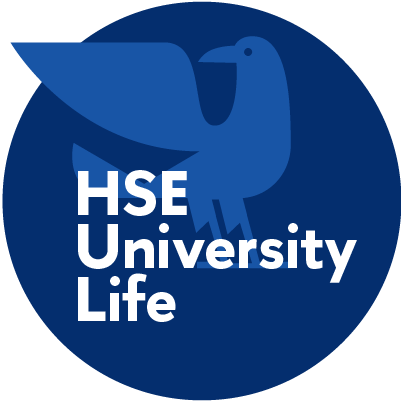- A
- A
- A
- ABC
- ABC
- ABC
- А
- А
- А
- А
- А
‘Today, We Talk about Post-Disciplinarity’
© Daniil Prokofyev / HSE University
Students of the Faculty of Humanities (FH) have examined how interdisciplinary links work at the faculty.
Interdisciplinarity is particularly relevant at the Faculty of Humanities as essential interdisciplinary projects are implemented there, and last year, the faculty declared that it was discontinuing early specialization in its programmes. ‘A trait of our faculty is that we focus less on early specialization and more on wider knowledge in the humanities,’ Faculty Dean Mikhail Boytsov explained. ‘We don’t know whether an expert in Occitan language will be useful in three, four or five years, while comprehensive professionals in the humanities will be needed for sure. That’s why we try to postpone specialization. A strong feature of our faculty is that we are erasing borders between subjects’.
FH students Alexandra Khvostova (Philology) and Svyatoslav Kostenko (Cultural Studies) carried out a study using network analysis to examine the system of academic interaction between different schools and staff members of the faculty. Svyatoslav Kostenko said that he chose the topic because it was ‘in the air’: ‘Our minor included representatives of different programmes, and Alexandra and I are also students of different programmes’. The results of the study were published on the website of the HSE Centre for Digital Humanities. The main outcome of the work was a map of interaction that shows that interdisciplinary links in the faculty are complicated and varied. ‘We have seen that researchers in the humanities are able to address new things in their studies and that this process can be fruitful,’ said Alexandra Khvostova. ‘The most impressive result was the effect underlying the network analysis method—the visualization of social interactions that seem “invisible”. We were interested in discovering new publication links in the FH and confirming hypothetical ones. For example, we saw how unique the situation at the School of Linguistics is, given its autonomy and activities beyond the FH’.
The student paper caused heated discussion within the faculty. Below are some opinions expressed by participants of the discussion.
Associate Professor at the School of Linguistics
The study is about interdisciplinarity, a highly relevant topic. It is particularly relevant for the FH: a few big interdisciplinary projects kicked off here last year, including a project on Russian literature and its reflection in the collective consciousness, and a project on language and speech practices. These megaprojects are an important step towards project-based learning at the university, and the FH has been chosen as a testing ground in this area. Interestingly, the megaproject research groups have only started their work, and no publications have been made so far. The study carried out by our students as part of the Digital Humanities minor is based on data from joint publications that have already been published. In fact, we use the graph model and interaction clusters to uncover pre-existing conditions at the faculty for developing joint research activity between representatives of different departments.
The students were particularly successful in not only showcasing nice images, but in trying to interpret them. Interpretation makes us think not just about interdisciplinary growth points, but about why certain clusters contain them, and in what fields the synergy of different experts may be particularly interesting and fruitful.
In Digital Humanities—a field of research interest to me, and one that places me at the crossroads of the map’s research links—we more often talk about post-disciplinarity than interdisciplinarity. Today, the idea of intersecting interests across various subjects is being replaced by the idea of uniting these interests around one object of research. Post-disciplinarity can be likened to a lake, which can be studied by biologists, chemists, geologists and geographers, and only by integrating all of this knowledge can they create a comprehensive understanding of the object of study. Representatives of different disciplines may use different research methods, but when they study the same object, these methods supplement and enrich each other, helping us to learn something new about the object and adding new dimensions to our understanding of it.
Professor at the School of Philological Studies
It feels like interdisciplinarity has become a magic word, a kind of a spell. But it is something that can’t be invented or artificially created. We can help scholars to organize and network, but today, academia works in such a way that researchers from different fields know about each other. And there are many opportunities for contacts. Everything depends on the tasks solved in certain research projects, both individual and collective.
Regarding the humanities and humanities education, some areas are probably more capable of high interdisciplinarity, and some are more enclosed. That isn’t a judgement, it’s just how the field works. For example, try to find borders between history, linguistics, philology, source studies and anthropology in the works of philologists who study classical literature. And the list of fields goes on. They have to be able to use a whole range of tools, since without knowing the language and context, they can’t understand what a document means. And this doesn’t just apply to those who study ancient literature. For scholars in the humanities, working in an interdisciplinary field is natural. Today, many scholars are stepping beyond their own local studies—and not only at HSE University. For example, philologists and linguists have productive collaborations with psychologists and sociologists on joint projects.
The network analysis carried out by FH students is very useful. It has the clear benefit of helping students get to know how the faculty works and understand who does what. That’s great! They have produced some very nice images. It is interesting to see how node groups look in this student paper, as well as how to visualize the concepts of ‘transfer’, interdisciplinary diffusion, and the other indicators proposed.
I believe that such student initiatives have a lot of potential. They could continue their studies by looking at the correlation between teacher and researcher portraits, individual and collective, at the FH.
Whether the results of the study reflect reality is a different question. I was surprised to see myself as an ‘interdisciplinarity leader’. I don’t really understand what criteria made that happen. The ‘co-authorship’ and ‘mediation’ indicators also seem controversial. I believe that a certain paper having several co-authors is not a sign of interdisciplinarity, and that participation in collective publications is not enough to understand the academic framework.

Associate Professor at the School of Linguistics
This study was born from a learning project on the Digital Humanities course. The course is a rather interdisciplinary one that I have been teaching for the last four years at the Faculty of Humanities. The students studied network analysis (among other methods) and then, in teams of two or three, tried to apply it to something they were interested in. Cultural Studies student Svyatoslav Kostenko and Philology student Alexandra Khvostova decided to look at co-authorship at the faculty. This is a great topic for applying network analysis: a network (mathematically speaking, a graph) is good for modelling multiple interactions such as friendship, communications, exchanges of goods, and co-authorship. Networks are good for demonstrating the following two things:
- Community structure: what groups can be observed.
- Central figures: people with links to others and through whom everybody else is linked, people who direct information flows.
The main result is that we now have a model of research collaboration at the faculty, which is based not on subjective feelings, but on real data. We can see certain obvious cross-disciplinary areas, such as the connection with the Faculty of Computer Science in linguistics, or links between Asian Studies researchers from different HSE departments. But we should also understand the limitations of the method: it doesn’t take into account many informal links, and those that it does take into account have different qualities. For example, co-authorship with a scholar serving as the editor of a big collective publication is something formal, and not always a sign of real academic contact. If the study is continued, it would make sense to clarify the criteria for links.
There is also another outcome, one which is no less important to me as a teacher. On a course that lasts only one module, we have built an interdisciplinary research team consisting of two students from different programmes. They managed to conduct a study that has piqued lively interest in the faculty, and one that relates to our real lives. This is truly what non scholae sed vitae means.



